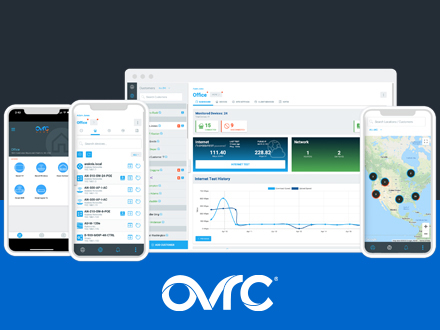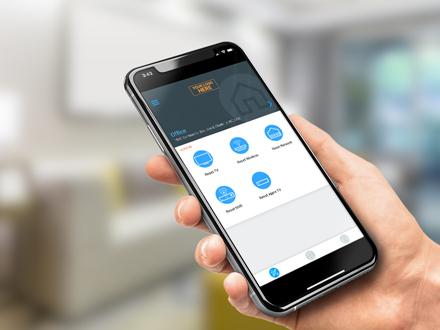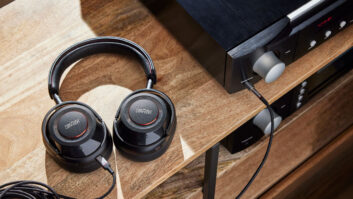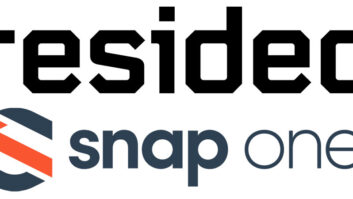Remote monitoring. Sick of that term yet? I really hope not! To be honest, remote monitoring has been keeping our companies going throughout this pandemic and business shutdown in New York and New Jersey. The monthly revenue we generate has been critical to maintaining cash flow and the ability to support our clients without stepping foot in their homes has been invaluable to our customers and something that has completed surprised and delighted them. The effusive “Thanks” and “That is amazing” that we have heard proves the value-add.
Todd, from The Source Home Theater, has been a long-time proponent of remote support, starting eight or nine years ago with Panamax BlueBOLT and then adding Pakedge’s BakPak a couple of years later. He now is a strong OvrC shop with Wattbox’s, OvrC Hubs, Araknis routers and switches, and Luma Cameras.
Mark got started with remote management a bit later. He only started his company, Home Theater Advisors, in 2010, and in the beginning he was working on very small projects — $10,000 was huge at the time. Working a $700 BlueBOLT device into a $3000–$5000 budget was hard, and he didn’t sell many. Over time, as his business and budgets grew, he picked up the Wattbox line and then, when the OvrC Pro service dropped the subscription model, an OvrC hub went into every job. He even was the one who convinced Todd to make the switch to OvrC and Wattbox and then Araknis.
As such big fans of the OvrC ecosystem, we both were excited last year to see what was in store for the new OvrC. We got a great tour of the interface and the new features coming online from Kenny Kim, VP connected products at SnapAV on the CEDIA Expo show floor. We immediately reached out to our contacts to get involved in the Beta. Mark was a little more diligent and got signed up well before Todd did, and has been using the new platform throughout his company for the last 6-8 months. Todd has probably been using for 3-4 months. We are both huge fans!

Here are some of our favorite new features:
Full-Function App: Our absolute favorite new feature is the full functionality of the mobile app. In the old OvrC, many key features were web-only and could not be done from a mobile device. Things like setting up auto reboots, naming all of the ports from a single screen (instead of having to click on each port individually, then configure, then naming it, then saving it and going on to the next one), and setting up OvrC Home for the client. These are all tasks we would often save for when we got back to the office or home after an install, since in doorman buildings in New York City we often have to be off the premises by 4:00 or 5:00 PM. Now we can do it from our trucks on the way home and have more time with our families or for doing other value-added tasks. Even better, our installers can do it from their phones, so we don’t have to do it anymore.

Offline Data: While documentation is key, there are always those times where something slips through the cracks and the Wattbox ports weren’t written down anywhere other than in OvrC and no one noticed. Of course, that is the site that has an issue down the road. In the past you were just frustrated and annoyed that you didn’t know what was plugged into which outlet because the Wattbox was offline and you couldn’t tell if everything was plugged into the same bank of outlets. Now, with offline data, you can still see what was plugged into each port, and you can retrieve the MAC address and serial number so you can call tech support. There is so much that offline data helps with. You’ll keep finding ways to use it.
Something that was announced with this launch that is a HUGE deal is that, over time, BakPak and Ihiji will be rolled into OvrC, and OvrC will be the single remote management platform for all SnapAV. The SnapAV team is still testing the new Pakedge and Ihiji firmware that is OvrC enabled. The plan is to release that into Early Access Beta that dealers can sign-up for before beginning broad migration. They believe that the vast majority of systems can be updated remotely.
The reason this really excites us is that now full attention for all development can be given to OvrC and resources will not be split among three platforms. Throughout the Beta process, we have been incredibly impressed with the responsiveness of the development team to the feedback provided. Through the feedback link in the app or website we were able to see updates on progress against our bug reports and feature requests. And the developers were on top of things. We were blown away when we were on a press call with the team and they were able to tell us, at a moment’s notice, that Mark had submitted nine feature requests, had voted on 20-something other requests, and had commented 16 times
This feedback mechanism will remain in place with the launch today. All of us will be able to continue to provide feedback, vote on other’s feedback, and see what the team has replied to. This dedication to constant improvement and a more focused development team means we will all see a better and better OvrC experience as time goes on. We will benefit from being able to better serve our clients (and hopefully provide more reason for them to subscribe to our support plans) and our clients will have better support experiences because we will be able to more for them, faster, and with fewer service calls.
Want more stories like this delivered to your inbox every day? Then sign up for the free Residential Systems eNewsletter here.







